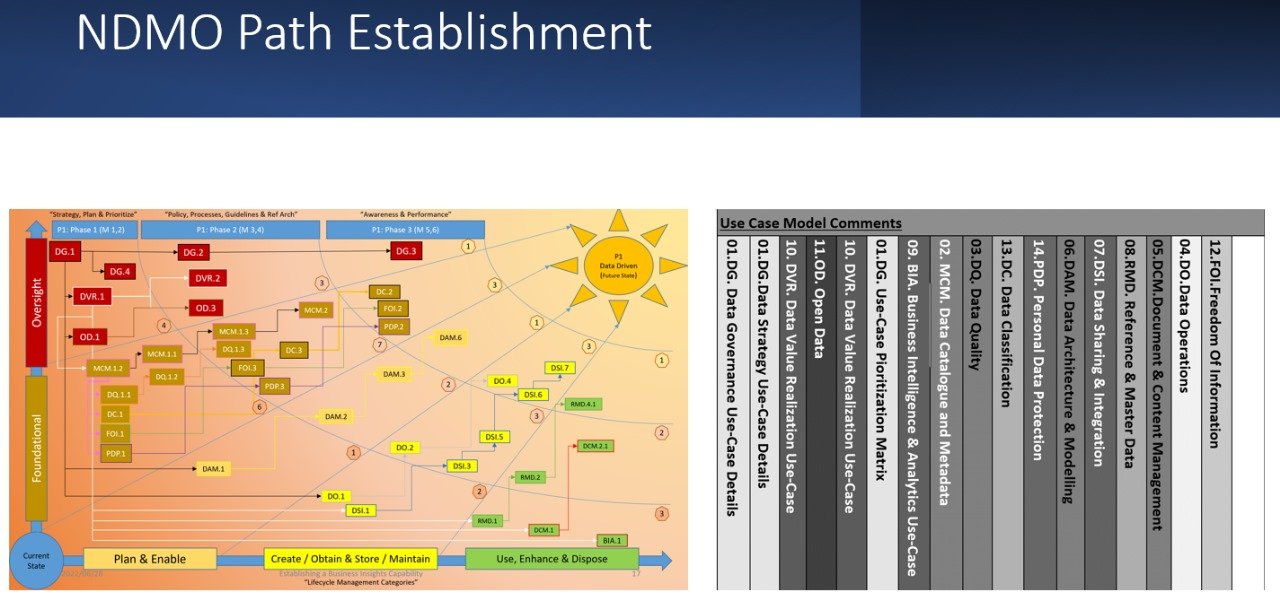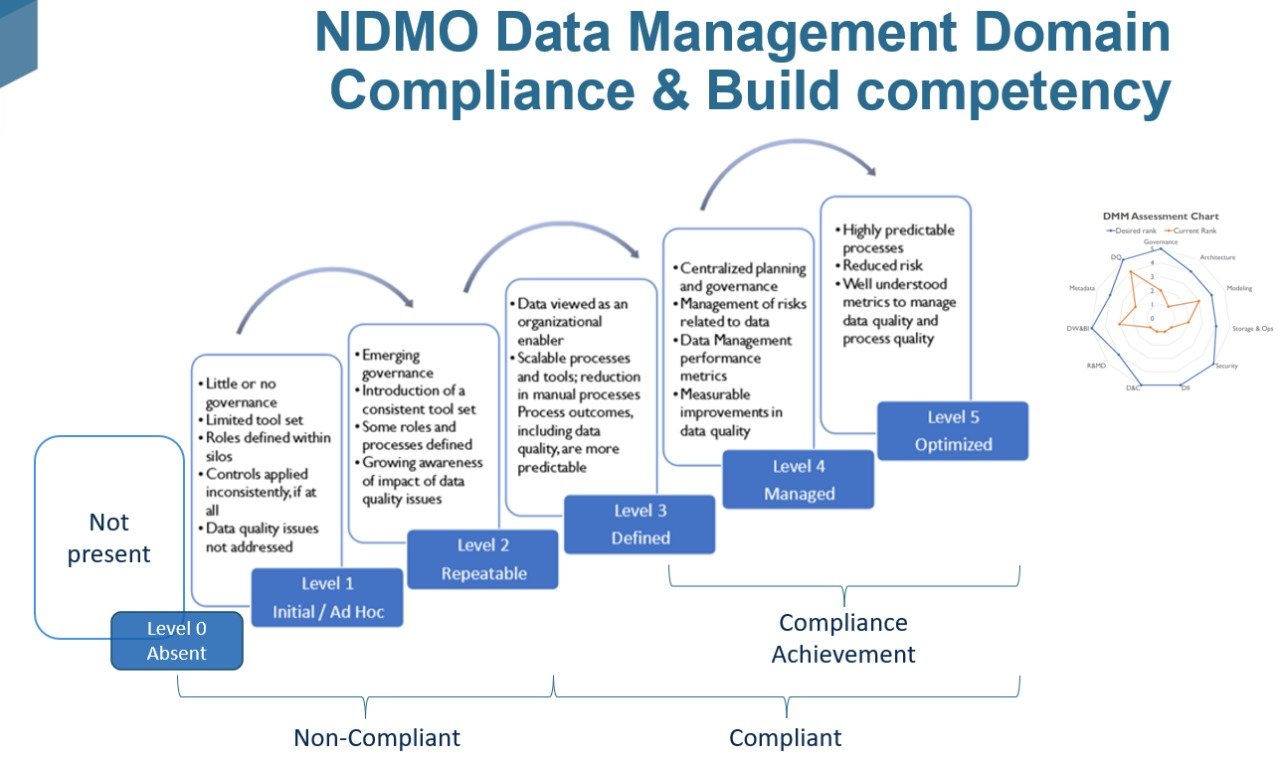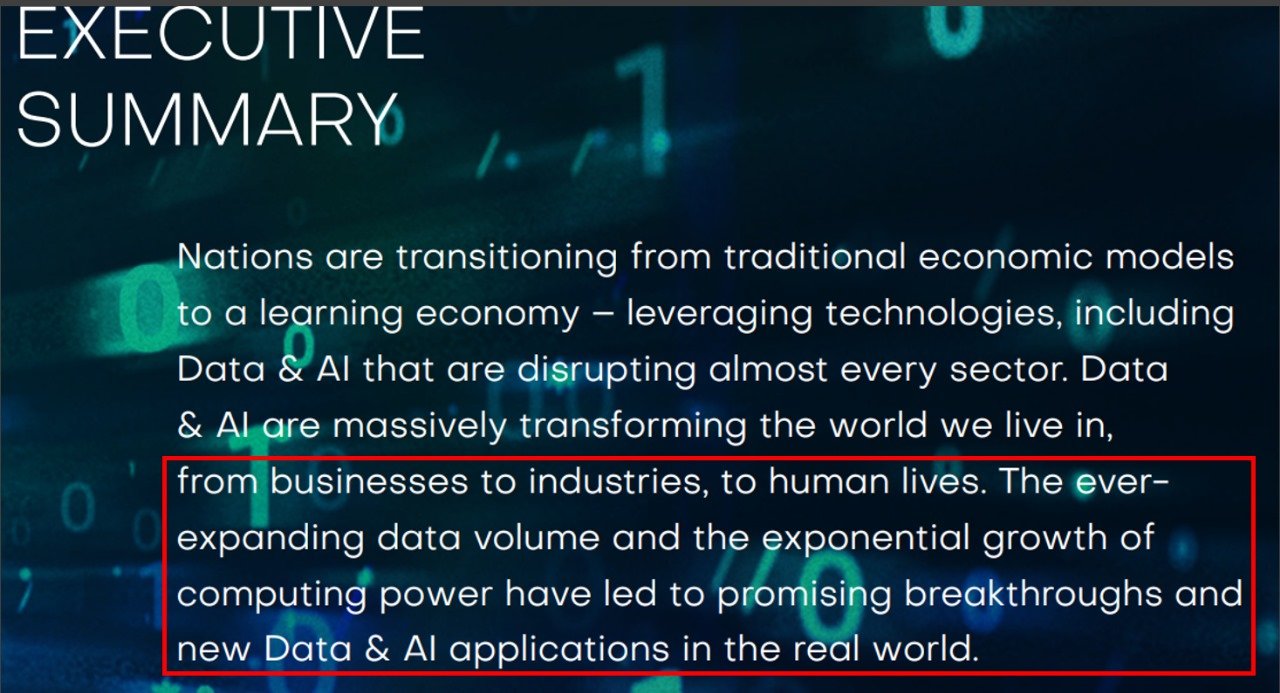Navigating the NDMO Transformation – Together.
Dr Sardar Ikram Ullah Niyazi provides helpful observations about the challenges and critical success factors. The one appeal I like is "Let's unlock them together."
You can read his post here:
Dr Sadar Ikram Ullah Niyazi NDMO post
I want to add some of my insights to the paper.
Background Information to the NDMO Regulations
Before adding any unique insights, it is helpful to understand some background points:
1. We must remember that the NDMO regulation is not limited to a specific knowledge area or industry. It is a complete set of Data Management specifications.
1.1 They are DMBOK size regulations (15 Domains compared to 11 Knowledge Areas)
1. Anything the size of the DMBOK will be daunting. BUT, and a capital BUT, can you implement only portions of the DMBOK for a complete DMO?
2. Version 1.5 has fewer requirements than the DMBOK.
1.2 You will not get a fully functional Data Management Office if you only focus on NDMO Specifications.
1. You will be compliant but not necessarily comprehensive. Some of the missing deliverables are:
A. A Business Glossary
B. Data Issue Management.
Figure 1. NDMO DMO Establishment Path
2. The regulatory completeness is brilliant.
2.1 A business bonus is the addition of Data Value Realization (DVR). DVR is where we must start all the work we do. Why do I say this is the starting point?
1. It links all domains to the use case portfolio, from the DG Data Strategy to DQ to BIA.
2. Value-driven is the right culture for Data management.
1. ALL Data Initiatives (use cases) need a commercial (economic value) and technical feasibility study: Revenue Generation, Cost Reduction and Risk Mitigation.
3. EDM Council's Data ROI Capability completely covers DVR. It deals with:
1. Data ROI: Value of our Assets.
2. Data Office ROI: Value of our Data Management Program.
3. DataCo ROI: The Value of a Company that uses the original entity's data.
Figure 2. All Data Initiatives are Use Cases that Deliver Business Value
3. I have seen too many Data Management programs fragment because of specialised regulations like BCBS and Data Privacy (GDPR, POPIA).
1. Please, I am not saying that these regulations are harmful. We typically deal with it by creating a separate group for each rule.
2. Now, we have multiple disparate Data Governance functions. We have a similar problem with Structure Data Management and Records Management.
4. In parallel with ensuring that all entities are managing the data maturely, SDAIA (NIC, NCAI) is providing standard data management services:
1. Establishing Citizen and Commercial Entity Master Data.
2. Government Integration Platform called the GSB.
3. Operating the Saudi Open Data Platform.
4. Building a National Data Catalog
5. They are assigning Data Ownership for all government assets.
These are some background elements of the SDAIA action plan to implement the Country's Data Strategy.
Insights I discovered whilst working on several NDMO P1 Implementation Projects
Data-Value Driven Data Management
My most considerable insight into becoming compliant with the NDMO Regulations in phases P1 and P2 is creating a Data-Value Driven Way of establishing Data Management. The Business-Led Steering Committee decide on the use cases that provide business value.
Then, each Domain contributes its people, process and technology to create the resultant data products. In one of the ministries, even the NDMO P1 regulation initiative is part of the use case portfolio, and its commercial feasibility was risk mitigation.
Figure 3. The Data-Value Driven Way
Data Management Maturity Level
The following insight from all this work is that it ensures that all entities that satisfy the regulations will be at a DEFINED (level 3) maturity level.
Getting to this level is no easy feat and requires extensive Culture, Change and Knowledge Management. In the last five years, I have had the opportunity to assess many organisations, and the exceptional case is where an organisation is at a level 3 or higher. The benefit of Common Understanding and Shared Data Management behaviour is something we all aim for in any Data Management Program.
Having all the entities that shared data with us at the same maturity level removes a lot of pain. The Research community has been and still is working very hard at the FAIR Data Set Maturity levels. All Shared data must be Findable in the National Catalog. Accessible via the GSB, Interoperable, still to be defined, and Reusable.
Fortunately, the DEFINED level is non-negotiable for Government Entities and the Data Professionals involved. There is no DEBATE. Yes, the DESIRE aspect still needs to be addressed.
Figure 4. NDMO P1 Compliance = DEFINED
The Ultimate DMO Sponsor
Another significant insight is that they have the support and vested interest of the Ultimate Sponsor and Stakeholder - the Crown Prince. One cannot understate the value of this level of support. There are no questions about why we should do this and who said so.
The Crown Prince has stated that he will transform the economy from resources to Data and AI.
Figure 5. SDAIA Data Strategy
Please feel free to contact us if you need advisory work on reaching the NDMO target.
We will be thrilled to help you and your organisation.
Join the conversation on LinkedIn
If you want to receive the recording, kindly contact Debbie (social@modelwaresystems.com)
Don’t forget to join our exciting LinkedIn and Meetup data communities not to miss out!






